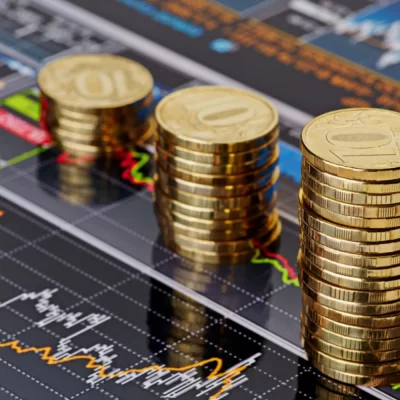Monthly passenger traffic at Dubai International Airport is expected to reach pre-Covid-19 pandemic levels by the end of 2023 as air travel demand continues to surge, with a full recovery within sight earlier than expected.
Passenger volumes at Dubai International Airport could hover around the pre-pandemic rates of 7.8 million a month in the latter half of next year, Paul Griffiths, chief executive of Dubai Airports, told The National on Wednesday.
The airport operator now expects the Gulf hub to handle 77.8 million passengers in 2023, up from an earlier projection in April of 75.5 million, Mr Griffiths said.
This is a nearly 25 per cent increase on the 62.4 million passengers Dubai Airports expects will travel through the airport in 2022, raising its annual traffic forecast from an earlier projection in May of 58.3 million, after first-half volumes more than doubled.
“If the second half of 2022 is as strong as the first half suggests it may be, we can reach pre-pandemic levels on a rolling monthly basis before the end of 2023,” Mr Griffiths said.
“If trends continue in the way we’ve seen them for the past two to three quarters, then we could be back to pre-pandemic levels earlier than we thought.”
Dubai Airports had previously said that annual passenger volumes at the hub could rebound to pre-pandemic levels by 2024. Dubai International Airport handled 86.4 million passengers in 2019.READ MOREUAE weather: Dubai airport back to normal after cancelled flightsDubai International Airport raises 2022 passenger traffic forecast to 58.3 million
The number of passengers using Dubai International Airport (DXB) nearly tripled to 14.2 million during the second quarter of 2022, despite reduced capacity from the closure of one of its two runways for 45 days for refurbishment work. This was its ninth consecutive quarter of continued growth since the start of the pandemic.
First-half passenger volumes more than doubled year on year to 27.9 million.
The recovery was mainly driven by travellers beginning or ending their trip in Dubai, with point-to-point traffic exceeding pre-pandemic levels as the Dubai government’s safety measures made the emirate an attractive destination, Mr Griffiths said.
Transit traffic is starting to recover, reaching 75 per cent of pre-pandemic levels, with markets such as Japan, Thailand, Australia and New Zealand reopening their borders and the world, with the exception of China, largely returning to normal, he said.
India is DXB’s top source country by passenger numbers, with traffic for the first half of the year reaching four million passengers — driven mainly by top city destinations such as Mumbai, Delhi and Hyderabad.
Saudi Arabia followed with two million passengers, then the UK with 1.9 million passengers.
The top three cities were London with 1.3 million passengers, Riyadh with 910,000 passengers, and Mumbai with 726,000 passengers.
Recession fears
The outlook for a “very strong” second half of the year is driven by expectations of a strengthening recovery in transit markets, tourists flocking to Dubai in the cooler weather and the Fifa World Cup in Qatar starting in November, Mr Griffiths said.
The global football tournament will attract millions of fans, with shuttle flights operating between Doha and Dubai as some spectators stay in the UAE and travel to Qatar for matches because of constrained hotel supply in Qatar.
Concerns about a global economic recession are unlikely to dent travel demand, Mr Griffiths said.
“Everyone is concerned about a recession but travel will be resilient for a while because it is a commodity that people have missed for years and they’re willing to spend money to travel,” he said.
The ‘honeymoon period’
Recession fears are unlikely to dent the ongoing recovery in travel in the short term, depending on the extent and duration of the economic downturn, according to Mr Griffiths.
“People are desperate to get on aeroplanes, and with a dearth in capacity with airlines retiring aircraft, this is a honeymoon period where supply is not keeping up with travel demand,” he said.
A perfect storm of higher oil prices, rising inflation rates and a global economic slowdown is brewing over the aviation industry’s recovery from the pandemic.
But Mr Griffiths said the travel industry is “remarkably resilient” and even with smaller disposable incomes, people will continue to see travel as an essential lifestyle need, so “there won’t be a massive stunt in [demand] growth”.
“Recessionary pressure will have an impact, but if a business keeps its head above water, there is not too much to worry about,” he said.
Asked about the potential effect on DXB, Mr Griffiths said the airport already took measures during the pandemic to preserve cash, minimise costs, invest in technology and adapt its business model.
“We cast a 21st-century eye at processes and re-appraised them — changing them for the better or eliminating them — which led to better economic results,” he said.
Airfares to stabilise
Airfares have peaked as a higher-than-expected recovery in travel demand outpaced airlines’ available seats and skilled workers to handle the surge in passenger numbers.
Ticket prices have soared as airlines try to recoup losses incurred during the pandemic, capacity reduced as carriers retired less economical aircraft models and airlines struggled to restart operations because they could not hire staff quickly enough to meet travel demand.
Over the next year, prices will start to normalise as supply and demand become more balanced with airlines taking delivery of more aircraft, staffing issues get resolved and demand begins to “calm down” after people visit family and friends and go on business trips, Mr Griffiths said.
Asked about earlier plans to expand the passenger terminal of Al Maktoum International Airport (DWC), Dubai’s second hub, Mr Griffiths said the focus for the airport has changed.
DXB’s capacity will be expanded to 120 million passengers annually through the use of new technology to process travellers, while DWC will be used by foreign carriers that handle more point-to-point traffic, he said.
__________________________
The changing face of Dubai International Airport, over 50 years – in pictures
:quality(70)/cloudfront-eu-central-1.images.arcpublishing.com/thenational/H6OE73JUXTM2LHRW3MZMDBWF5Q.jpg)
:quality(70)/cloudfront-eu-central-1.images.arcpublishing.com/thenational/FOIXZLMSQKZ4FRTNNPRRLHXCVE.jpg)
:quality(70)/cloudfront-eu-central-1.images.arcpublishing.com/thenational/KGPFENWSGRAUQHC7JNKGR3OVXI.jpg)
:quality(70)/cloudfront-eu-central-1.images.arcpublishing.com/thenational/G7X2247CVZKP4COY46MS43IQTM.jpg)
:quality(70)/cloudfront-eu-central-1.images.arcpublishing.com/thenational/XRJ75JQKX7HLWQJUTUEGG5EAMU.jpg)
:quality(70)/cloudfront-eu-central-1.images.arcpublishing.com/thenational/Z22CEAJHJO576TID7F5MGRCZJM.jpg)
:quality(70)/cloudfront-eu-central-1.images.arcpublishing.com/thenational/RVE6MGQXSCPNLAPBPS4U5WDHSI.jpg)
:quality(70)/cloudfront-eu-central-1.images.arcpublishing.com/thenational/ADK6SYU76BKN7L3QQPOYKRYJKI.jpg)
:quality(70)/cloudfront-eu-central-1.images.arcpublishing.com/thenational/6CZPI2WNTTUVI4ZCI3XLIXB5D4.jpg)
__________________________
Amid disruption and long queues at major airports in Europe, DXB said that 96 per cent of passengers queued for fewer than five minutes at the departure passport control.
The average queuing times at security check on departure was less than three minutes for 97 per cent of passengers.
“We knew at the start of the pandemic that the dramatic downturn would be followed by an equally dramatic upturn, so we were well prepared for it and using all of the business data at our disposal were able to predict the start of the recovery,” Mr Griffiths said.
:quality(70)/cloudfront-eu-central-1.images.arcpublishing.com/thenational/B5S4SQAQ7L7ID3KDP4F6KG63U4.jpg)
Air cargo business
In terms of the air-freight business, cargo volumes for the first six months of the year fell nearly 19 per cent year on year to 910,075 tonnes.
DXB’s cargo traffic was hit during the second quarter, as major freight operators shifted back to Dubai World Central (DWC) in March, Dubai Airports said.
Total cargo volumes were hit by a reduced capacity during the northern runway refurbishment programme from May 9 to June 22, as a significant portion of the cargo traffic at DXB is carried in the belly-hold of passenger aircraft, it said.
Mr Griffiths said he is optimistic about a resurgence in cargo by year end amid significant freight demand and as more capacity becomes available.






